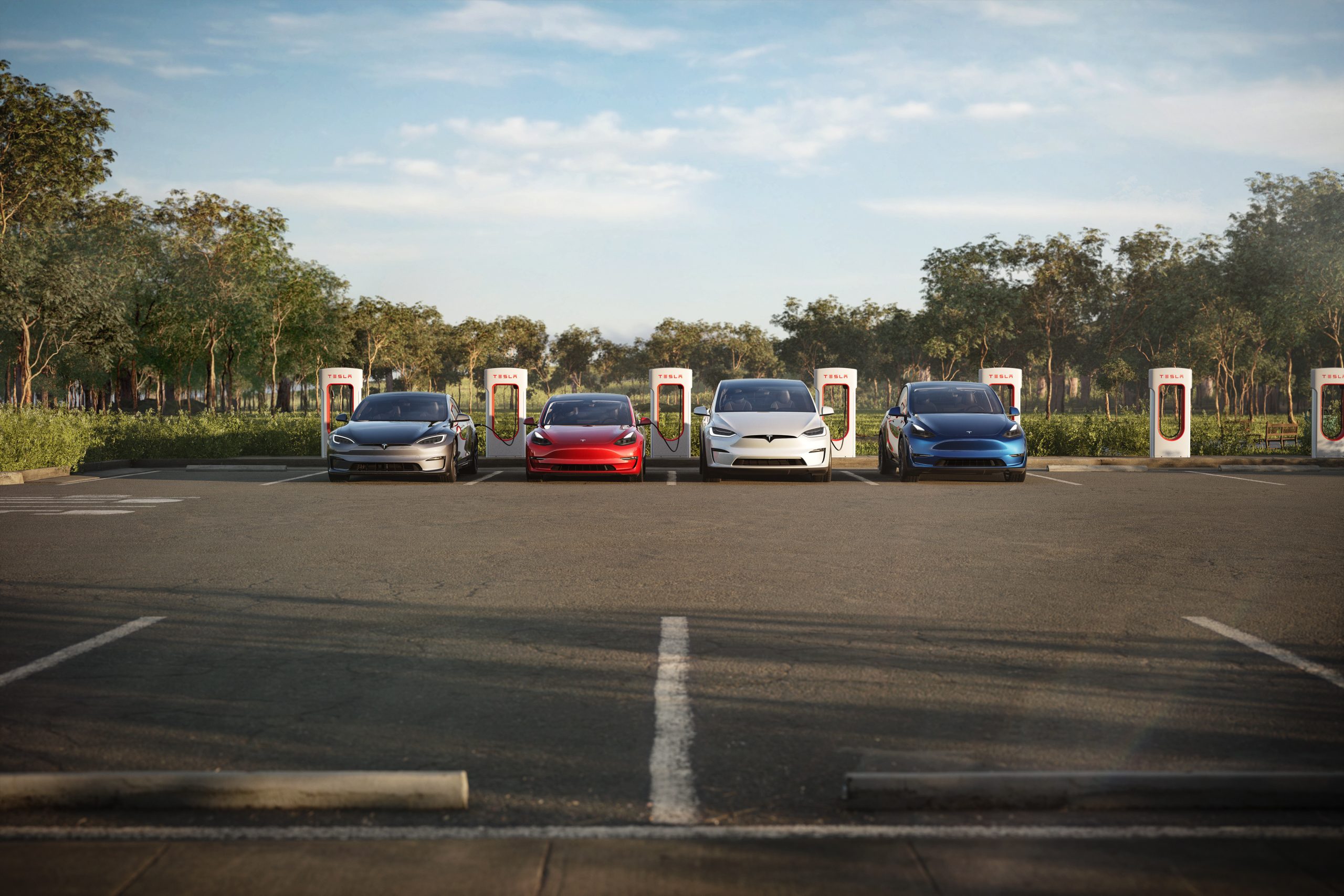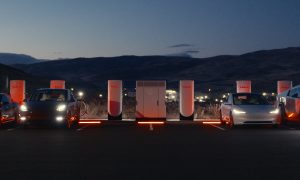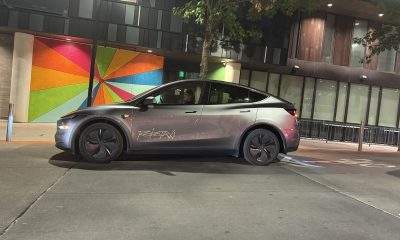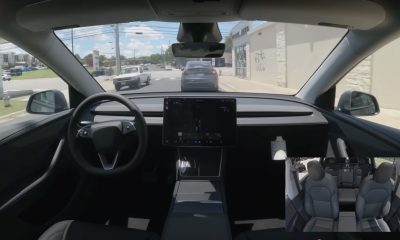Three Tesla owners have sued the automaker in a class action lawsuit that was filed on August 2, 2023, after a report from Reuters last week claims the company “exaggerates” its range ratings.
Teslarati examined the complaint, and we are here to give you a breakdown of what the suit says and what the three plaintiffs are suing Tesla for.
The Plaintiffs
Tesla is being sued by James Porter, Bryan Perez, and Dro Esraeili Estepanian, who state in their complaint against the automaker that their action “arises out of Tesla’s false advertising of its electric vehicles’ range, which Tesla grossly overvalued when selling the vehicles to consumers.”
According to the complaint, Porter owns a Model Y Performance and noticed a discrepancy in his vehicle’s range was compared to what it told him:
“After taking delivery of his Tesla vehicle in June 2022, Plaintiff Porter fully charged his vehicle to 100% battery charge and took a 2-hour trip to visit family, approximately 92 miles away. When he arrived at his destination, Plaintiff Porter noticed that the vehicle was left with approximately 40% charge.”
Perez owns a Model 3 Long Range, and the complaint states he had the same issue:
“After receiving his Tesla vehicle, Plaintiff Perez fully charged his vehicle to 100% battery charge and took an approximately 90-mile trip to visit his parents. After returning home from the approximately 180-mile round trip, he noticed that his vehicle showed that it had roughly 10-15% charge remaining.”
Estepanian also has a Model 3 Long Range, and the complaint describes a similar situation:
“Plaintiff Estepanian travels 140 to 150 miles round trip for his daily commute, and he routinely charges his vehicle to 90% battery charge (which equates to approximately 299 miles), per Tesla’s recommendation. Based on a 90% battery charge (and 299-mile starting range), he typically returns from his approximately 150-mile round trip each day and his Tesla vehicle’s screen displays that approximately 100 to 110 miles of range remain, which equates to roughly 33% battery charge remaining. Thus, Plaintiff Estepanian’s electric vehicle consistently loses approximately 189 miles of range during his daily commute—despite only driving approximately 140 to 150 miles round trip each day.”
The Plaintiffs’ Claims
The plaintiffs state that range is a key feature of electric vehicles and is “one of the most important features that consumers generally consider when purchasing an EV, because it correlates to the distance they can travel before needing to recharge the vehicle.”
Throughout the suit, the complaint shows images of Tesla’s website, highlighting range ratings and other “key features,” including top speed and acceleration.
They also include other pieces of evidence that seem to indicate Tesla has exaggerated range estimates.
One part of the complaint states:
“Tesla’s tactics to inflate the range estimates for its vehicles has continued. Recently, South Korean regulators fined Tesla for false advertising the ranges of its vehicles. Specifically, the Korea Fair Trade Commission found that Tesla exaggerated the “driving ranges of its cars on a single charge, their fuel cost-effectiveness compared to gasoline vehicles as well as the performance of its Superchargers.”
They also stated that other car companies to do not exaggerate range ratings, citing Recurrent’s testing of the Ford Mustang Mach-E, Chevrolet Bolt, and Hyundai Kona:
“Other electric vehicle manufacturers do not overestimate the range of their vehicles to the same extent. For example, Recurrent tested the Ford Mustang Mach-E, the Chevrolet Bolt, and the Hyundai Kona—all electric vehicles and direct competitors to Tesla model vehicles—and found their estimated ranges to be more accurate. In fact, the Hyundai Kona generally underestimated the range the vehicle could travel before requiring a recharge.”
Allegations in the Class Action Suit
The plaintiffs seek to represent anyone in California who purchased any Tesla vehicle and hope to solve questions including:
- a. Whether Tesla model vehicles fail to deliver the advertised estimated vehicle range in normal driving conditions;
- b. Whether Tesla exaggerated its advertised estimated vehicle ranges;
- c. Whether Tesla knew that its advertised estimated vehicle ranges were exaggerated and could not be met under normal driving conditions;
- d. When Tesla gained such knowledge;
- e. Whether Tesla designed, manufacture, marketed, advertised, sold, or otherwise placed its model vehicles into the stream of commerce with such knowledge;
- f. Whether Tesla intentionally concealed the fact that its advertised estimated vehicle ranges were exaggerated or otherwise could not be met under normal driving conditions;
- g. Whether Tesla’s conduct to divert complaints from Class Members who voiced concerns over their Tesla model vehicle’s range violated the terms of Tesla’s warranties;
- h. Whether Plaintiffs and Class Members were harmed by the fraud and deceptive practices alleged herein;
- i. Whether Tesla was unjustly enriched by its deceptive practices; and
- j. Whether Plaintiffs and the Class are entitled to equitable or injunctive relief
The case is 3:2023cv03878, Porter et al v. Tesla, Inc., and has been assigned to Judge Laurel Beeler.
I’d love to hear from you! If you have any comments, concerns, or questions, please email me at joey@teslarati.com. You can also reach me on Twitter @KlenderJoey, or if you have news tips, you can email us at tips@teslarati.com.
Elon Musk
Tesla investors will be shocked by Jim Cramer’s latest assessment
Jim Cramer is now speaking positively about Tesla, especially in terms of its Robotaxi performance and its perception as a company.

Tesla investors will be shocked by analyst Jim Cramer’s latest assessment of the company.
When it comes to Tesla analysts, many of them are consistent. The bulls usually stay the bulls, and the bears usually stay the bears. The notable analysts on each side are Dan Ives and Adam Jonas for the bulls, and Gordon Johnson for the bears.
Jim Cramer is one analyst who does not necessarily fit this mold. Cramer, who hosts CNBC’s Mad Money, has switched his opinion on Tesla stock (NASDAQ: TSLA) many times.
He has been bullish, like he was when he said the stock was a “sleeping giant” two years ago, and he has been bearish, like he was when he said there was “nothing magnificent” about the company just a few months ago.
Now, he is back to being a bull.
Cramer’s comments were related to two key points: how NVIDIA CEO Jensen Huang describes Tesla after working closely with the Company through their transactions, and how it is not a car company, as well as the recent launch of the Robotaxi fleet.
Jensen Huang’s Tesla Narrative
Cramer says that the narrative on quarterly and annual deliveries is overblown, and those who continue to worry about Tesla’s performance on that metric are misled.
“It’s not a car company,” he said.
He went on to say that people like Huang speak highly of Tesla, and that should be enough to deter any true skepticism:
“I believe what Musk says cause Musk is working with Jensen and Jensen’s telling me what’s happening on the other side is pretty amazing.”
Tesla self-driving development gets huge compliment from NVIDIA CEO
Robotaxi Launch
Many media outlets are being extremely negative regarding the early rollout of Tesla’s Robotaxi platform in Austin, Texas.
There have been a handful of small issues, but nothing significant. Cramer says that humans make mistakes in vehicles too, yet, when Tesla’s test phase of the Robotaxi does it, it’s front page news and needs to be magnified.
He said:
“Look, I mean, drivers make mistakes all the time. Why should we hold Tesla to a standard where there can be no mistakes?”
It’s refreshing to hear Cramer speak logically about the Robotaxi fleet, as Tesla has taken every measure to ensure there are no mishaps. There are safety monitors in the passenger seat, and the area of travel is limited, confined to a small number of people.
Tesla is still improving and hopes to remove teleoperators and safety monitors slowly, as CEO Elon Musk said more freedom could be granted within one or two months.
News
Tesla launches ultra-fast V4 Superchargers in China for the first time
Tesla has V4 Superchargers rolling out in China for the first time.

Tesla already has nearly 12,000 Supercharger piles across mainland China. However, the company just initiated the rollout of the ultra-fast V4 Superchargers in China for the first time, bringing its quick-charging piles to the country for the first time since their launch last year.
The first batch of V4 Superchargers is now officially up and running in China, the company announced in a post on Chinese social media outlet Weibo today.
The company said in the post:
“The first batch of Tesla V4 Superchargers are online. Covering more service areas, high-speed charging is more convenient, and six-layer powerful protection such as rain and waterproof makes charging very safe. Simultaneously open to non-Tesla vehicles, and other brands of vehicles can also be charged. There are more than 70,000 Tesla Superchargers worldwide. The charging network layout covers 100% of the provincial capitals and municipalities in mainland China. More V4 Superchargers will be put into use across the country. Optimize the charging experience and improve energy replenishment efficiency. Tesla will accompany you to the mountains, rivers, lakes, and seas with pure electricity!”
The first V4 Superchargers Tesla installed in China are available in four cities across the country: Shanghai, Zhejiang, Gansu, and Chongqing.

Credit: Tesla China
Tesla has over 70,000 Superchargers worldwide. It is the most expansive and robust EV charging network in the world. It’s the main reason why so many companies have chosen to adopt Tesla’s charging connector in North America and Europe.
In China, some EVs can use Tesla Superchargers as well.
The V4 Supercharger is capable of charging vehicles at speeds of up to 325kW for vehicles in North America. This equates to over 1,000 miles per hour of charging.
Elon Musk
Elon Musk hints at when Tesla could reduce Safety Monitors from Robotaxi
Tesla could be reducing Safety Monitors from Robotaxi within ‘a month or two,’ CEO Elon Musk says.

Elon Musk hinted at when Tesla could begin reducing Safety Monitors from its Robotaxis. Safety Monitors are Tesla employees who sit in the front passenger seat during the driverless rides, and are there to ensure safety for occupants during the earliest rides.
Tesla launched its Robotaxi fleet in Austin last Sunday, and after eight days, videos and reviews from those who have ridden in the driverless vehicles have shown that the suite is safe, accurate, and well coordinated. However, there have been a few hiccups, but nothing that has put anyone’s safety in danger.
A vast majority — close to all of the rides — at least according to those who have ridden in the Robotaxi, have been performed without any real need for human intervention. We reported on what was the first intervention last week, as a Safety Monitor had to step in and stop the vehicle in a strange interaction with a UPS truck.
Watch the first true Tesla Robotaxi intervention by safety monitor
The Tesla and UPS delivery truck were going for the same street parking space, and the Tesla began to turn into it. The UPS driver parallel parked into the spot, which was much smaller than his truck. It seemed to be more of an instance of human error instead of the Robotaxi making the wrong move. This is something that the driverless cars will have to deal with because humans are aggressive and sometimes make moves they should not.
The Safety Monitors have not been too active in the vehicles. After all, we’ve only seen that single instance of an intervention. There was also an issue with the sun, when the Tesla braked abnormally due to the glare, but this was an instance where the car handled the scenario and proceeded normally.
With the Robotaxi fleet operating impressively, some are wondering when Tesla will begin scaling back both the Safety Monitors and Teleoperators that it is using to ensure safety with these early rides.
CEO Elon Musk answered the inquiry by stating, “As soon as we feel it is safe to do so. Probably within a month or two.”
As soon as we feel it is safe to do so.
Probably within a month or two. We continue to improve the Tesla AI with each mile driven.
— Elon Musk (@elonmusk) June 30, 2025
Musk’s response seems to confirm that there will be fewer Teleoperators and Safety Monitors in the coming months, but there will still be some within the fleet to ensure safety. Eventually, that number will get to zero.
Reaching a point where Tesla’s Robotaxi is driverless will be another significant milestone for the company and its path to fully autonomous ride-sharing.
Eventually, Tesla will roll out these capabilities to consumer-owned vehicles, offering them a path to generate revenue as their car operates autonomously and completes rides.
For now, Tesla is focusing on perfecting the area of Austin where it is currently offering driverless rides for just $4.20 to a small group of people.
-

 News5 days ago
News5 days agoTesla Robotaxi’s biggest challenge seems to be this one thing
-

 News2 weeks ago
News2 weeks agoTesla confirms massive hardware change for autonomy improvement
-

 Elon Musk2 weeks ago
Elon Musk2 weeks agoElon Musk slams Bloomberg’s shocking xAI cash burn claims
-

 News2 weeks ago
News2 weeks agoTesla features used to flunk 16-year-old’s driver license test
-

 News2 weeks ago
News2 weeks agoTesla China roars back with highest vehicle registrations this Q2 so far
-

 News2 weeks ago
News2 weeks agoTexas lawmakers urge Tesla to delay Austin robotaxi launch to September
-

 News2 weeks ago
News2 weeks agoTesla dominates Cars.com’s Made in America Index with clean sweep
-

 News2 weeks ago
News2 weeks agoTesla’s Grok integration will be more realistic with this cool feature



















